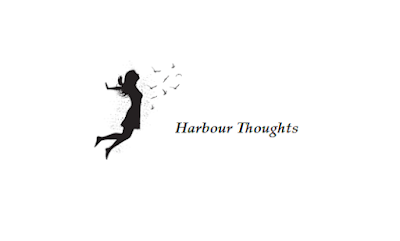In an Old Quarry
November
By Duncan Campbell Scott
Above the lifeless pools the mist films swim,
On the lowlands where sedges chaff and nod;
The withered fringes of the golden-rod
Hang frayed and formless at the quarry’s rim.
Filled with the wine of sunset to the brim,
These limestone pits are cups for the night god,
Set for his lips when he strays hither, shod
With shadows, all the stars following him.
And as gloom grows and deepens like a psalm,
This broken field which summer has passed by
Has caught the ultimate lethean calm,
The fabulous quiet of far Thessaly,
And though the land has lost the bloom and balm,
Nature is all content in liberty.
Poem Analysis:
Duncan Campbell Scott’s “In an Old Quarry” is a contemplative sonnet that blends imagery of a desolate, abandoned landscape with meditations on time, memory, and the quiet acceptance of nature’s cycles. The quarry, once a place of human activity, is now reclaimed by the elements, transformed into a setting of both melancholy and transcendence. Through vivid natural imagery and references to myth, Scott explores the interplay between decay and enduring beauty, suggesting that even in abandonment, nature finds peace and liberation.
Structure and Form
The poem follows the traditional sonnet form, consisting of 14 lines divided into an octave and a sestet, with a rhyme scheme that resembles ABBA ABBA CDCDCD. This classical structure, often associated with love or reflection, serves here to frame Scott’s meditation on the passage of time and the reclamation of human-altered landscapes by nature. The “volta” or shift occurs after line eight, transitioning from the vivid description of the quarry to a deeper reflection on its spiritual quietude and mythic resonance.
Imagery of Abandonment and Transformation
The opening lines set the tone of stillness and decline:
“Above the lifeless pools the mist films swim,On the lowlands where sedges chaff and nod;The withered fringes of the golden-rodHang frayed and formless at the quarry’s rim.”
The “lifeless pools” and “withered fringes of the golden-rod” emphasize a sense of decay and the passing of seasons. The once vibrant plants now appear “frayed and formless,” mirroring how human industry (the quarry) has been abandoned and overtaken by natural stillness. The “mist films” convey a ghostly quality, as though memory itself hovers over this forgotten place.
Nature’s Sacred Cups: Sunset and the Night God
The second quatrain introduces a more mystical tone:
“Filled with the wine of sunset to the brim,These limestone pits are cups for the night god,Set for his lips when he strays hither, shodWith shadows, all the stars following him.”
Here, the quarry is transformed from a site of desolation into a sacred offering. The pits, filled with sunset’s reflection, are compared to “cups for the night god,” an image blending pagan mythology with natural beauty. The “wine of sunset” evokes both sensual richness and the passage of time (day transitioning into night). The stars become divine attendants, following this mysterious “night god.” This personification elevates the quarry from an abandoned industrial site to a place of cosmic significance.
The Turn: From Description to Meditation
The sestet shifts to a reflective tone:
“And as gloom grows and deepens like a psalm,This broken field which summer has passed byHas caught the ultimate lethean calm,The fabulous quiet of far Thessaly,And though the land has lost the bloom and balm,Nature is all content in liberty.”
The reference to “lethean calm” alludes to the River Lethe from Greek mythology, symbolizing forgetfulness and oblivion. The quarry, like a memory faded by time, has entered a state of serene amnesia, where the past is dissolved into nature’s rhythms. Scott’s mention of “the fabulous quiet of far Thessaly” (the legendary region of Greece associated with mythology and enchantment) reinforces the idea that this forgotten place has attained a kind of timeless, mythic stillness.
The final lines bring a sense of resolution. While the “land has lost the bloom and balm” of summer’s vitality, nature embraces its own freedom, no longer bound by human activity. The tone shifts from melancholy to acceptance and reverence for nature’s autonomy.
Themes
- The Passage of Time and Decay: The quarry represents both human endeavor and its inevitable decline. Nature’s stillness reminds us that all human constructs are temporary.
- Nature’s Reclamation and Liberty: Despite its abandonment, the quarry becomes a site of renewal — transformed into a serene and almost sacred landscape.
- Myth and Memory: References to the “night god,” “Lethe,” and “Thessaly” invoke a mythological framework that elevates the poem’s subject beyond its physical setting, suggesting universal truths about death, oblivion, and rebirth.
- The Sublime in Abandonment: Scott presents beauty in desolation. The quarry is no longer productive, but it has become a vessel for celestial and spiritual imagery.
Tone and Style
The tone transitions from somber and reflective in the octave to meditative and accepting in the sestet. Scott’s diction is carefully chosen to evoke both tactile and spiritual qualities: words like “wine of sunset,” “lethean calm,” and “fabulous quiet” create a sense of reverence, as if the quarry is a natural cathedral.
The poem’s sonnet structure lends it a lyrical and contemplative rhythm, while the blending of natural and mythological imagery reflects Scott’s Romantic influences.
“In an Old Quarry” by Duncan Campbell Scott is a profound meditation on the interplay between nature, time, and memory. What begins as a simple description of an abandoned quarry evolves into a philosophical reflection on the beauty of decay, the myths that shape human imagination, and nature’s ultimate freedom from human intervention. Through rich imagery and classical allusions, Scott reminds us that even in stillness and abandonment, nature retains a quiet majesty and a sense of enduring life.
